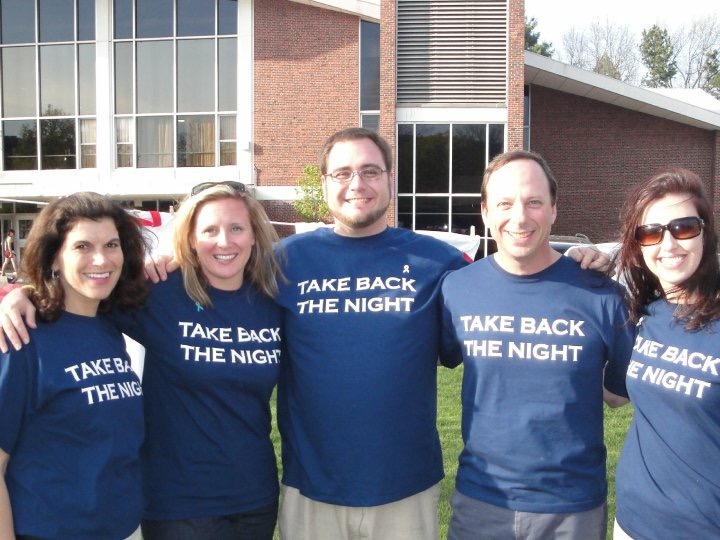Your friend hasn’t been the same lately and you’re starting to worry. Maybe you haven’t seen them in a while and they’re not very responsive to outreach. Maybe you are noticing specific behaviors that you are concerned about. You want to help but you’re not sure how.
We have all been there. When we see someone we care about struggling, we can feel helpless. We want to figure out a way to help. We wish we could “fix it.” This is a totally normal desire. When we see someone that we care about in pain, we want to help take that pain away.
Reach Out
Let your friend know you’re thinking about them. Send a text or make a phone call and ask how they have been.
Show Up
If you can stop by in person do that. It can be hard to tell how someone is really doing based on text and phone conversations alone. If you can’t be there in person, try FaceTime or another form of communication that allows you to see their face and they see yours. Be sure you have time to dedicate to a real conversation. Schedule a visit or call if needed.
Express that You Care
Tell your friend that you care about them. When we are struggling we can forget this. If there are specific behaviors you’re worried about, name them and ask. For example, I’ve noticed you haven’t been leaving the house much lately. I care a lot about you and am worried. I want you to know that I’m here for you. Is there anything you want to talk about? They may or may not respond to that. Even if they don’t, it will plant a seed so that they know you are someone that they can talk to when they’re ready.
Listen
Listen more, talk less. Give them space to vocalize whatever they need to. It’s ok to sit in silence too.
Ask How They Want to Be Supported
Ask them how they want you to show your support. They may have an idea of what they need. Sometimes we want a friend to be a sounding board while we think out loud. Sometimes we may want advice - though if they don’t ask, don’t offer it. It may be well-meaning, but it can backfire. Sometimes we need someone to brainstorm with. Sometimes we need someone to distract us and to go do something fun with. Sometimes we need someone to sit with on the couch so that we know we aren’t alone.
Give Hope
Things get better. Emotions are fleeting. Situations can change. Let them know things won’t always be this way. Let them know change is possible. Let them know that you’ll be there along the way.
Connect to Additional Supports
You don’t need to be alone in supporting your friend. There are resources for both your friend and for you. These include professional support like therapists or doctors to websites with resources and stories of inspiration to hotlines that offer 24/7 support. Let your friend know about these options. Offer to help them research if they need additional ones. Offer to go with them to an appointment or to be there to talk to after they attend an appointment.
Those first tips are so so important. Arguably, I’d say the most important. When we are struggling it can help to know someone cares and that we aren’t alone. Take the pressure off yourself to do the “right thing” or say the “right thing”. The “right thing” is simply to Be There. Show Up for your friend and let them know you care.
This graphic and clip are from a favorite children’s story. It has been floating around social media. This does a brilliant job illustrating how to support a friend.
It occurred to Pooh and Piglet that they hadn't heard from Eeyore for several days, so they put on their hats and coats and trotted across the Hundred Acre Wood to Eeyore's stick house. Inside the house was Eeyore. "Hello Eeyore," said Pooh. "Hello Pooh. Hello Piglet," said Eeyore, in a Glum Sounding Voice. "We just thought we'd check in on you," said Piglet, "because we hadn't heard from you, and so we wanted to know if you were okay." Eeyore was silent for a moment. "Am I okay?" he asked, eventually. "Well, I don't know, to be honest. Are any of us really okay? That's what I ask myself. All I can tell you, Pooh and Piglet, is that right now I feel really rather Sad, and Alone, and Not Much Fun To Be Around At All. Which is why I haven't bothered you. Because you wouldn't want to waste your time hanging out with someone who is Sad, and Alone, and Not Much Fun To Be Around At All, would you now." Pooh looked at Piglet, and Piglet looked at Pooh, and they both sat down, one on either side of Eeyore in his stick house.
Eeyore looked at them in surprise. "What are you doing?" "We're sitting here with you," said Pooh, "because we are your friends. And true friends don't care if someone is feeling Sad, or Alone, or Not Much Fun To Be Around At All. True friends are there for you anyway. And so here we are." "Oh," said Eeyore. "Oh." And the three of them sat there in silence, and while Pooh and Piglet said nothing at all; somehow, almost imperceptibly, Eeyore started to feel a very tiny little bit better.
Because Pooh and Piglet were There.
No more; no less. (A.A.Milne, E.H.Shepard)
September is Suicide Prevention Month. Check in on your friends and loved ones.
For 24/7 Support contact National Suicide Prevention Lifeline 800-273-TALK, San Diego Access & Crisis Line 888-724-7240, and the Crisis Text Line - Text CONNECT to 741741.
If immediate safety is a concern, proceed to the nearest emergency room or call 911.

